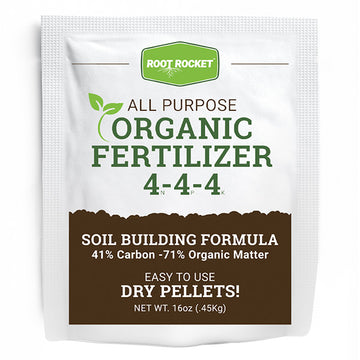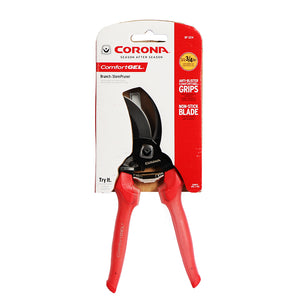Pruning is an important part of any gardener's plant maintenance routine, and for good reason. Pruning not only promotes healthy plants and removes dead or diseased parts, but it also encourages flowering and vibrant new growth. Want to learn to prune like a pro, and train your shrubs to grow how you want them to? You’ve come to the right place. Let’s get started with this guide on how to prune shrubs.
What You Need: Pruning Equipment
The equipment necessary to prune trees and shrubs is minimal and will vary depending on exactly what type of shrub you need trimmed. Here is a breakdown of the tools most commonly used to prune shrubs, trees, and hedges:
Pruning shears (aka pruners) are great to have on hand to trim small to medium-sized shrubs. They are most commonly used for small branches, vines, and flowers. However, most handheld pruners can actually cut branches up to ¾” thick. There are three types of pruners: anvil, bypass, and ratchets.
- Bypass is the most common type of pruner and they work like a pair of scissors. This type is perfect for small vines, growing stems, and flowers
- The anvil features a straight blade and a splitting action to get the job done. This type of pruner is perfect for dried-out branches and stems
- The ratchet-type pruner is similar to the anvil, but cuts in stages. It’s most commonly used by gardeners who don’t want to strain their wrists. Loppers are great for pruning large branches up to 2 1/2 “ thick. They are a good fit for fruit and nut trees, and thick vines.
Loppers are similar to pruning shears, only they have a longer handle and longer, thicker blades. This tool is particularly useful when you need to get into spaces that are hard to reach, or for hand-trimming hedges that don’t need a ton of pruning.
Pruning saws are capable of cutting branches up to 5” thick. They come in several styles, including electric and manual. Pruning saws are perfect tools for clipping large branches.
Hedge shears can easily trim branches up to 2 ¼” thick. They are perfect for small shrubs and evergreens, and especially great for creating formal hedges.
Pole pruners, also known as long-reach pruners, combine a saw and a lopper in one. These are perfect for trees and tall bushes that require the cutting of various-sized branches and are hard to reach.
Gardening gloves can help reduce the strain on your hands when pruning, so invest in a good pair. Gloves also effectively protect your hands from the blisters, scrapes, and scratches that can often accompany the pruning process.
A quick tip when pruning multiple plants at once is to keep rubbing alcohol on hand (at least 70%) to disinfect equipment between plants.
When to Prune Shrubs
How often you need to prune will depend on what kind of shrub you are tending to. Evergreen trees and evergreen shrubs will need to be pruned considerably less often than deciduous shrubs. As a general rule, while minor pruning can be done at any time, late winter, early spring and midsummer are the best times to prune most shrubs. For flowering shrubs like hydrangeas, azaleas, and camellias, you should prune shortly after spring flowering. This will help you avoid accidentally removing the flower buds that go dormant in fall and winter and bloom in spring.
Can you prune in the fall? The answer is yes you can, however, it’s a good practice to be cautious when pruning in mid to late fall. Pruning too late in the season can stimulate new growth which can be damaged quickly by freezing temperatures, making your tree or shrub less winter hardy. However, broken, dead, or diseased branches and suckers should be removed as you notice them, regardless of the season.
Where to Cut When Pruning
How do you trim a bush or shrub without killing it? The answer lies in what you cut and where you cut it. Ideally, pruning doesn’t involve cutting any branch that is larger than two to two and a half inches in diameter. There are exceptions of course, but generally speaking, you should stick to small branches and vines. Pruning generally consists of three different kinds of cuts: heading, reduction, and thinning.
Heading
You perform a heading cut when you remove the growth tip of a plant by trimming a portion of a branch back to a bud. The purpose of a heading cut is to choose the direction of the new growth. You do this by carefully selecting the bud you cut back to, as the new growth will grow in the direction where this bud is pointing. Heading cuts on shrubs and bushes create a dense upper/outer canopy.
Thinning
Thinning cuts, on the other hand, remove an entire branch back to the parent branch or trunk. Thinning cuts affect the density, creating a healthier plant by increasing air circulation and light penetration. With this kind of cut, you want to be sure not to cut the branch collar, which is the area where the parent branch meets the trunk.
Reduction
Reduction cuts are the only pruning cuts that really affect the height of the bush or shrub. This involves removing a larger branch back to a smaller diameter side branch. This kind of cut is best reserved for young trees rather than mature ones, which are more susceptible to decay.
Shrub Pruning Techniques
There are a few different techniques you can use when you prune shrubs.
Renewal/Renovation Pruning
Renewal pruning is often used to bring an old, overgrown shrub back to life. With this type of pruning, follow the rule of 1/3. Using the renewal/renovation pruning method, you can prune back ⅓ of the height with heading cuts and ⅓ of the oldest, thickest branches with thinning cuts. Repeat this 3 years in a row until the thick, old limbs are eliminated. This method can be performed on just about any bush. Spring flowering bushes can be pruned this way once the bloom period has ended. All other shrubs should be pruned using this method in late winter or early spring.
Rejuvenation Pruning
Many plants, like Knock Out Roses, Ligustrum, and Smooth Hydrangea respond well to rejuvenation pruning. In fact, most fast-growing plants tolerate this type of pruning quite well, as long as they are well-established. Rejuvenation pruning can invigorate an aging, overgrown shrub that has seen better days. There is no thinking or planning with this extreme type of pruning. Just cut your plant back to 12 inches or less from the ground. Rejuvenation pruning should only be done in late winter or early spring, and never to plants in their first year of growth.
Shearing
Shearing is an easy and quick method of pruning that can make a hedge look lovely. However, it can cause a shrub to look ugly and woody with bare branches in the center if not done correctly. An easy solution is to add in some thinning cuts to open up the bush to light and circulation. Shearing is when you remove new growth with hedge trimmers or long shears. This type of trimming should be avoided in the case of flowering shrubs.
How To Prune Shrubs: Pruning Tips
There are a few important tips to keep in mind when pruning.
Where You Cut Matters
It’s important not to just cut anywhere on a stem. For the best results, be sure to make 45-degree cuts just above a bud, so that the slant of the cut points away from the bud. The proper cutting distance is about ½” from the bud. Also, many gardeners suggest that it’s best to prune up to an outward-facing bud that is located in the direction you want new shoots to go. For strong new growth, you can always cut back weak, thin shoots to a greater degree than you do the stronger, more vigorous ones. Lastly, if you want your shrub to be short and bushier, cut a single stem off the top. If you want your shrub to grow up instead of out, cut the side shoots instead.
Removing Dead Branches
You should always aim to promptly remove any dead, bare, or diseased branches that you spot. Generally, they will be a different color and more dried out than the healthy ones on the tree. If the entire branch is dead, you can remove the whole thing. However, if there is a healthy section, you can just cut above the highest healthy bud.
How To Prune Hedges
When pruning hedges, try to make sure that the top of the hedge ends up smaller than the bottom. This will help minimize shade on the lower branches, keeping the bottom looking healthier. For most shrubs, you can safely prune up to six weeks before the first frost. Pruning any later than that could compromise the winter hardiness of the plant.
Now you know the ins and outs of how to prune shrubs. Browse our huge selection of shrubs at PlantingTree and keep them looking healthy and beautiful with our pruning tips. Happy planting!
You May Also Like:






